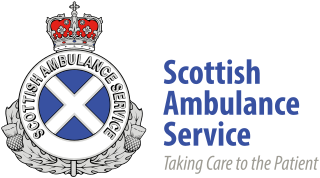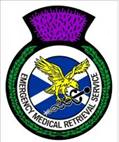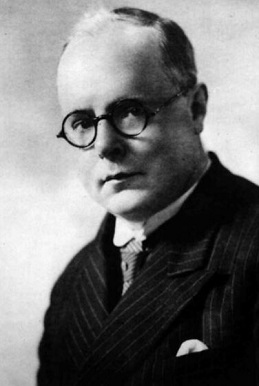
Blood transfusion is the process of transferring blood products into a person's circulation intravenously. Transfusions are used for various medical conditions to replace lost components of the blood. Early transfusions used whole blood, but modern medical practice commonly uses only components of the blood, such as red blood cells, white blood cells, plasma, platelets, and other clotting factors.

A blood donation occurs when a person voluntarily has blood drawn and used for transfusions and/or made into biopharmaceutical medications by a process called fractionation. Donation may be of whole blood, or of specific components directly (apheresis). Blood banks often participate in the collection process as well as the procedures that follow it.

NHS National Services Scotland (NSS) is a Non Departmental Public Body which provides advice and services to the rest of NHS Scotland.

In England, blood and other tissues are collected by NHS Blood and Transplant (NHSBT). NHSBT Blood Donation was previously known as the National Blood Service until it merged with UK Transplant in 2005 to form a NHS special health authority. Other official blood services in the United Kingdom include the Northern Ireland Blood Transfusion Service, the Scottish National Blood Transfusion Service and the Welsh Blood Service.

The Royal Voluntary Service is a voluntary organisation concerned with helping people in need throughout England, Scotland, Wales and Northern Ireland. It was founded in 1938 by Stella Isaacs, Marchioness of Reading, as a British women's organisation to recruit women into the Air Raid Precautions (ARP) services to help in the event of War.

The Scottish Ambulance Service is part of NHS Scotland, which serves all of Scotland's population. The Scottish Ambulance Service is governed by a special health board and is funded directly by the Health and Social Care Directorates of the Scottish Government.

The Royal Infirmary of Edinburgh (RIE), often known as the Edinburgh Royal Infirmary (ERI), was established in 1729 and is the oldest voluntary hospital in Scotland. The new buildings of 1879 were claimed to be the largest voluntary hospital in the United Kingdom, and later on, the Empire. The hospital moved to a new 900 bed site in 2003 in Little France. It is the site of clinical medicine teaching as well as a teaching hospital for the University of Edinburgh Medical School. In 1960, the first successful kidney transplant performed in the UK was at this hospital. In 1964, the world's first coronary care unit was established at the hospital. It is the only site for liver, pancreas and pancreatic islet cell transplantation and one of two sites for kidney transplantation in Scotland. In 2012, the Emergency Department had 113,000 patient attendances, the highest number in Scotland. It is managed by NHS Lothian.

NHS Scotland, sometimes styled NHSScotland, is the publicly–funded healthcare system in Scotland and one of the four systems that make up the National Health Service in the United Kingdom. It operates 14 territorial NHS boards across Scotland, supported by seven special non-geographic health boards, and Public Health Scotland.
NHS Blood and Transplant is an executive special health authority of the United Kingdom's Department of Health and Social Care. It was established on 1 October 2005 to take over the responsibilities of two separate NHS agencies: UK Transplant, founded by Dr. Geoffrey Tovey in 1972, and the National Blood Service. Its remit is to provide a reliable, efficient supply of blood, organs and associated services to the NHS. Since NHSBT was established, the organisation has maintained or improved the quality of the services delivered to patients, stabilised the rising cost of blood, and centralised a number of corporate services.
The International Society of Blood Transfusion (ISBT) is a scientific society founded in 1935 G.C, which promotes the study of blood transfusion and provides information about the ways in which blood transfusion medicine and science can best serve patients' interests. The society's central office is in Amsterdam, and there are around 1500 members in 103 countries. Currently, the President is Michael Busch.

Freewheelers Emergency Voluntary Service (EVS) is a blood bike charity based in South West England. Founded in Weston-super-Mare in 1990, it is funded by public donations and staffed by unpaid volunteers.

The Emergency Medical Retrieval Service (EMRS) is part of ScotSTAR retrieval service. The EMRS provides aeromedical critical care retrieval and pre-hospital care to people in Scotland in the form of two retrieval teams. The service provides patients in remote and rural areas with rapid access to the skills of a consultant or senior doctor in emergency medicine, intensive care medicine or anaesthesia, and facilitates transfers to larger, better equipped urban hospitals. The EMRS functions supplementary to the regular Scottish Ambulance Service Air Ambulance service. Unlike air ambulance services in other parts of the UK, EMRS has no dedicated aircraft but both EMRS North and West are funded by the Scottish Government. The EMRS has featured on the Channel 5 documentary series Highland Emergency, which charts the work of rescue services in the Scottish Highlands.
Blood transfusion was first performed in Sri Lanka in late 1950. It became more widely known to the public in 1959 after the assassination of Prime Minister S.W.R.D. Bandaranaike, when an appeal was made to the public to donate blood. The country's blood bank system has since expanded from a single initial site to multiple blood donation centres and laboratories nationwide, operating under the auspices of the National Blood Transfusion Service (NBTS). As of 2014, the NBTS collects over 350,000 voluntary blood donations every year.
Blood donation in Bangladesh is an activity conducted by several different organisations. As of 2011, about 25% of the nation's blood supply came from voluntary donation, 20–25% from paid donors, and 50–55% from one-time donation for a specific patient.
The Welsh Blood Service is a division of Velindre University NHS Trust responsible for the collection of blood in Wales, and of the distribution of blood products to hospitals within the country, as well as other related functions.
Blood donations in India are conducted by organisations and hospitals through blood donation camps. Donors can also visit blood banks in hospitals to donate blood. Efforts by the government and advocacy groups over the years have helped bridge the gap between demand and supply. The regulatory framework for blood donation and blood bank management rests with the Central Drugs Standard Control Organisation, while technical bodies like the National Blood Transfusion Council and National AIDS Control Organisation formulate guidelines and recommendations for transfusion medicine and blood bank management. Challenges persist with regards to regulation of blood banks and transfusion practices as the sector is largely fragmented with uneven distribution of blood banks and supply of blood in parts of the country. Donors are usually provided with refreshments after the procedure, which include glucose drinks, biscuits and fruits. Some organisations offer transportation facilities, as well as certificates or badges as gratitude.
NHSBT Blood Donation is responsible for the collection and distribution of blood products within England. Other parts of the United Kingdom are served by the Northern Ireland Blood Transfusion Service, the Scottish National Blood Transfusion Service, and the Welsh Blood Service. Blood Donation is part of NHS Blood and Transplant, which was established as a special health authority in October 2005 and also has responsibility for NHSBT Organ Donation and Transplantation.
The 2019 New Year Honours are appointments by some of the 16 Commonwealth realms to various orders and honours to recognise and reward good works by citizens of those countries. The New Year Honours are awarded as part of the New Year celebrations at the start of January and were officially announced in The London Gazette at 22:30 on 28 December 2018. Australia, an independent Realm, has a separate honours system and its first honours of the year, the 2019 Australia Day Honours, coincide with Australia Day on 26 January.

Percy Lane Oliver is credited with founding the first volunteer blood donation service. A layman, Oliver was working for the Camberwell division of the Red Cross in 1921 when he responded to a call from a local hospital requesting an urgent blood donation. This experience led him to organise a panel of donors whose blood types were known and who were available to donate on request. The donors, unusually for the time, were not paid. Oliver's blood donation service, which he ran out of his London home, would grow from 20 volunteers at its inception to approximately 2700 in 1938. His model of voluntary blood donation was adopted throughout Britain and in other countries.













